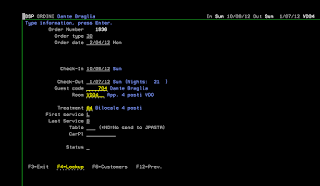#IBMiSample This is a wery simple way to store passwords in a secure way in a DB2 SQL Server database. First of all create a table with only two fileds, user (UTENTE), and password (PWD). CREATE TABLE A01AWPWD (UTENTE varchar(128), PWD VARCHAR(124) FOR BIT DATA) Establish an encryption key. My encryption key for this example is skjdjuiu%Tr&$*+[be%_tr=\? Fill the table with users and passwords: INSERT INTO A01AWPWD (UTENTE, PWD) VALUES ('User01', ENCRYPT('Passw01', 'skjdjuiu%Tr&$*+[be%_tr=\?')) INSERT INTO A01AWPWD (UTENTE, PWD) VALUES ('User02', ENCRYPT('Passw02', 'skjdjuiu%Tr&$*+[be%_tr=\?')) INSERT INTO A01AWPWD (UTENTE, PWD) VALUES ('JohnS', ENCRYPT('ert%9ii', 'skjdjuiu%Tr&$*+[be%_tr=\?')) Now we have a table A01AWPWD with ENCRYPTED passwords. Try this: SELECT PWD FROM A01AWPWD WHERE UTENTE = 'JohnS' As you can see, the password is ENCRYPTED. To read (DECRYPT) the passwords y










